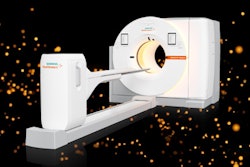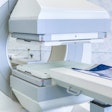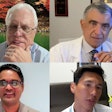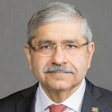With physicians, radiologists, and nuclear medicine specialists being exposed to more hybrid images, a task force from the American College of Radiology (ACR) and the Society of Nuclear Medicine (SNM) has recommended a series of steps to improve training and interpretation of these images.
For improved competency in nuclear medicine and molecular imaging, the panel recommended more training in anatomic and functional imaging. In addition, the group concluded that there is a need for general radiologists to have basic nuclear medicine skills, and for nuclear medicine physicians to have training in anatomic imaging.
The recommendations are outlined in the June issue of the Journal of Nuclear Medicine (Vol. 52:6, pp. 998-1002).
The panel was co-chaired by Dr. Milton Guiberteau, academic chief of radiology and division chief of nuclear medicine at St. Joseph Medical Center in Houston, and Dr. Michael Graham, PhD, former SNM president and director of nuclear medicine at the University of Iowa.
"The younger people in the field [of nuclear medicine] are having difficulty getting jobs; that's no surprise," Graham told AuntMinnie.com. "As hybrid imaging has become so important in our field, people with regular nuclear medicine training don't find employment. It is because of radiology's dominance in the field."
Part of the issue is the perception by the radiology community that a reader needs to have certified skills to interpret a CT image -- for example, to be able to evaluate a hybrid PET/CT image, Graham said.
Training expansion
Survey of 22 nuclear medicine program directors
- On average, two residents complete each program per year.
- More than 50% of nuclear medicine residents are international medical graduates.
- About 30% of residents enter with prior training in radiology, and about 35% move into radiology training after leaving the nuclear medicine programs.
- About 75% get jobs within six months of graduating, but only approximately 40% obtain positions in private practice.
Survey of 108 radiology department chairs and nuclear radiology section chiefs
- 44% hire only radiologists.
- Of the remainder, approximately 50% pay nuclear medicine physicians and radiologists equally, whereas about 50% pay radiologists higher salaries.
Source: Journal of Nuclear Medicine
Training has expanded some in recent years, but the panel concluded that more education is needed. Four years ago, nuclear medicine training programs required one clinical year and two years of training in nuclear medicine. Because of the need for more CT training, the program was extended by one year.
"CT images that are acquired as part of PET/CT and SPECT/CT need to be interpreted by a physician with appropriate training and experience, which has resulted in recognition that nuclear medicine physicians must obtain additional training in CT, although there is no consensus on the appropriate amount of training," the authors wrote.
"In addition, molecular imaging requires a broad understanding of metabolism, receptors, cell signaling pathways, and molecular biology," they noted.
Today, the current Accreditation Council for Graduate Medical Education (ACGME) requirement for nuclear medicine training is one clinical year followed by three years of nuclear medicine training in an ACGME-approved program.
Panel recommendations
To further advance training and foster more education across imaging modalities, the task force crafted six recommendations:
- An integrated radiology and nuclear medicine training program of one clinical year followed by a minimum of three years of radiology and two years of nuclear medicine. Trainees schooled in both modalities would be board-eligible for American Board of Radiology (ABR) certification in diagnostic radiology, American Board of Nuclear Medicine (ABNM) certification in nuclear medicine, or ABR subspecialty certification in nuclear radiology.
- Incorporating nuclear medicine fellowships within existing diagnostic radiology residencies. With a current 36-month curriculum in diagnostic radiology residencies and an increase in training in a subspecialty from 12 to 16 months within a 48-month program, the opportunity for additional nuclear medicine training in diagnostic radiology residencies today is feasible. Last year, the ABR approved 16 months of nuclear medicine training within a diagnostic radiology residency at institutions with ACGME-approved nuclear radiology fellowships for trainees to receive ABR subspecialty certificate eligibility after certification in diagnostic radiology.
- Adding more experience in radiology to nuclear medicine training programs. Beginning on July 1, the training requirements in nuclear medicine will mandate four to six months of training in CT. During that time, trainees could interpret as many as 500 CT images. "Extending the current three-year training program by another year would provide time for up to 16 months in radiology, with extensive training in both CT and MRI, as well as some experience in ultrasound," the panel concluded. Trainees would then be board-eligible through the ABNM and have sufficient radiology training to interpret CT and MR images from any hybrid molecular imaging study.
- Adding more experience in nuclear medicine within radiology training programs. Currently, four-year radiology training programs require only four months of nuclear medicine. Radiology residents who intend to practice nuclear medicine should take additional nuclear medicine training, the report stated. This objective should be feasible with the coming restructuring of radiology residency programs, which allows residents to concentrate their training in one or more areas during the final year of residency.
- Following radiology training with a nuclear radiology fellowship. While radiology trainees are eligible for ABR certification after completing the program, nuclear medicine trainees are not ABNM eligible, because training and experience requirements in therapy are different from those required by the ABNM. The panel recommended matching the curricula for the nuclear radiology fellowship with the one-year nuclear medicine residency for physicians who are board-certified in diagnostic radiology.
- Helping molecular imaging fellowships train future academic molecular imaging physicians. Residents would participate in PET or research fellowships for one year to enhance their knowledge in clinical and basic research.
The panel members acknowledged that they do not represent the leadership of their organizations, and the recommendations should fuel further discussion by the ACR and SNM.
"Community-wide acceptance of a new paradigm of compromise and cooperation will be a critical step going forward," they wrote.




















